Sega World Sydney
You might have visited Sega World if you went on holidays in Sydney in the late 90s. It was also a must-visit destination for any local young child growing up there.
Not only was it a theme park, but for many, it was an underage rave and dance party club. Sadly the park only lasts 3 years in total.
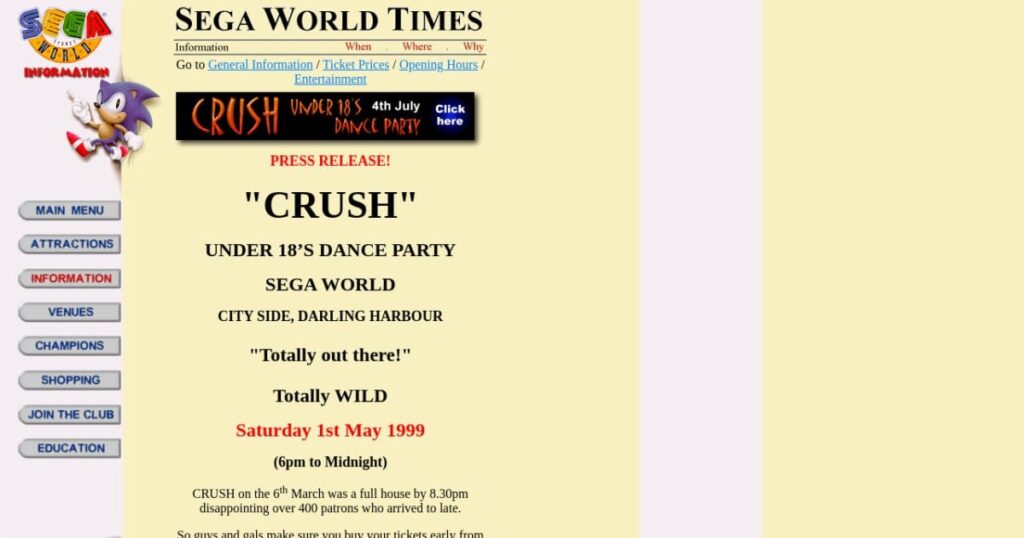
Australia has fantastic weather. Despite that, there was a peculiar period of indoor theme parks being built in 90s. Some examples include Dazzleland in Adelaide and Tops in Brisbane, Sydney was no exception to this.
In July 1994, Sega announced a 250 million dollar investment to build six indoor Sega World Theme Parks, and 20 large arcades in Australia. Sega’s popularity reached its peak in 1994 in Australia, with the company controlling 65% of the video game market share.

In March 1995, the first (and ended up being the only) Sega World plans were announced for Sydney. The plans are that the park will go in Darling Harbour, where an existing Sports Complex exists.
Initially, the plan is met with negative reactions, due to the sports complex being demolished, which included netball, basketball, tennis courts and a gym.
Sega plans to spend $ 70 million on the complex, and the Darling Harbour Authority backs their plans.
Public reaction was so negative, that the Lord Mayor Frank Sartor demanded all plans be frozen until all implications could be assessed. Numerous Council meetings are made attempting to block and move the location.
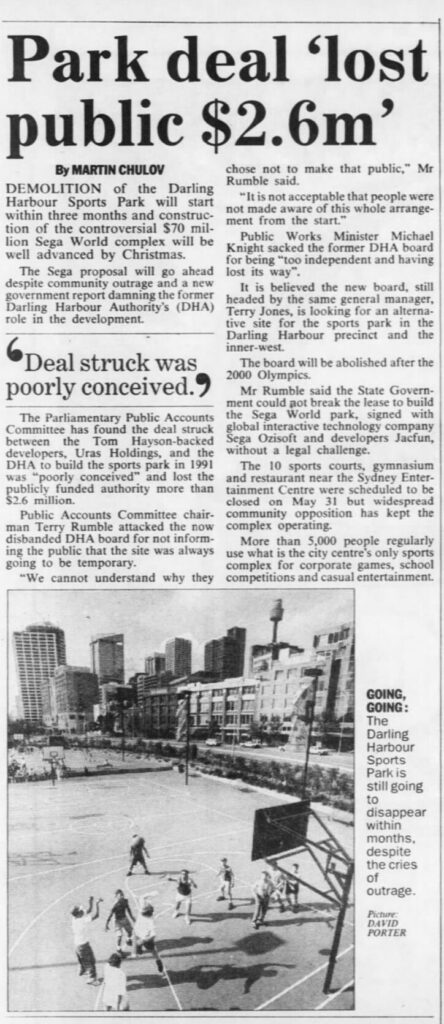
Sega enters into an agreement with Jacfun Pty Ltd for financial backing. They estimate 1.3 million people will visit Sega World by next year when it is expected to open.
Under Sega World on the bottom floor are planned restaurants and Retail facilities to support the Theme Park.
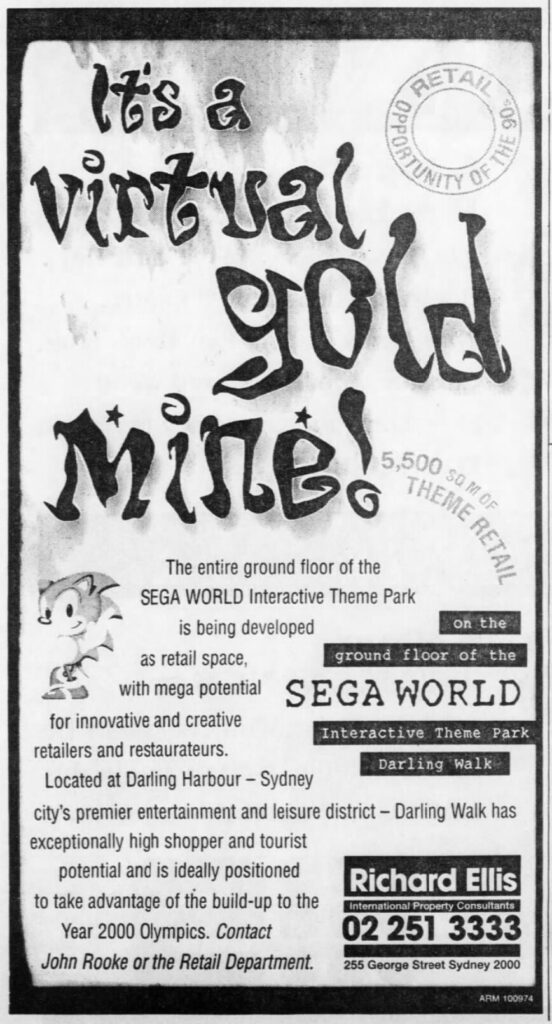
The planned opening of the park is pushed to 1997, and Sega World starts advertising jobs in late 1996 with a date of March 1997 announced.
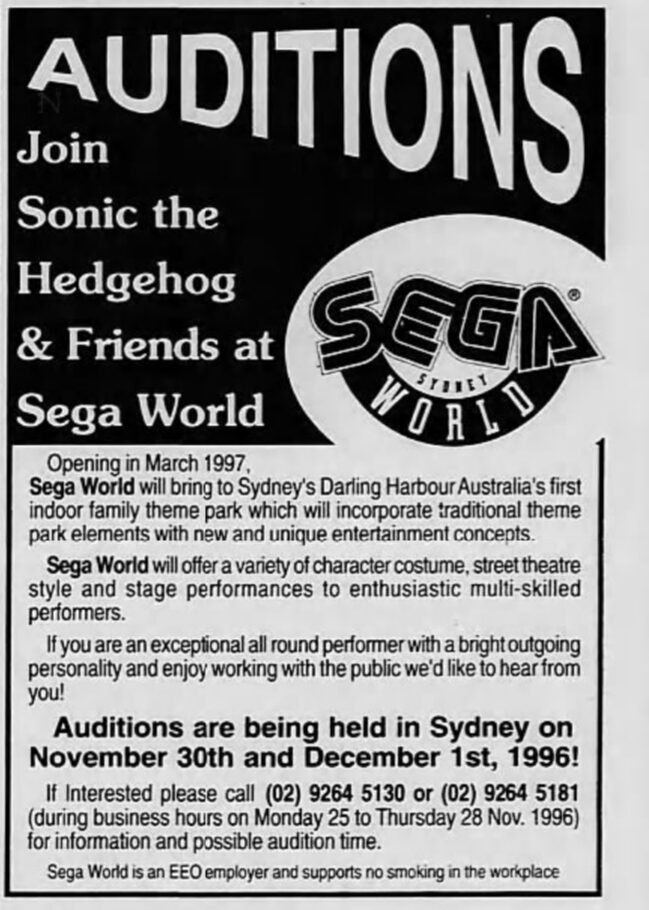
By February 1997, it is announced only 65% of the retail and restaurant space had been leased, with concerns already on the location of the complex for retail, one month before opening.
Sega World finally opens on the 22 March 1997.
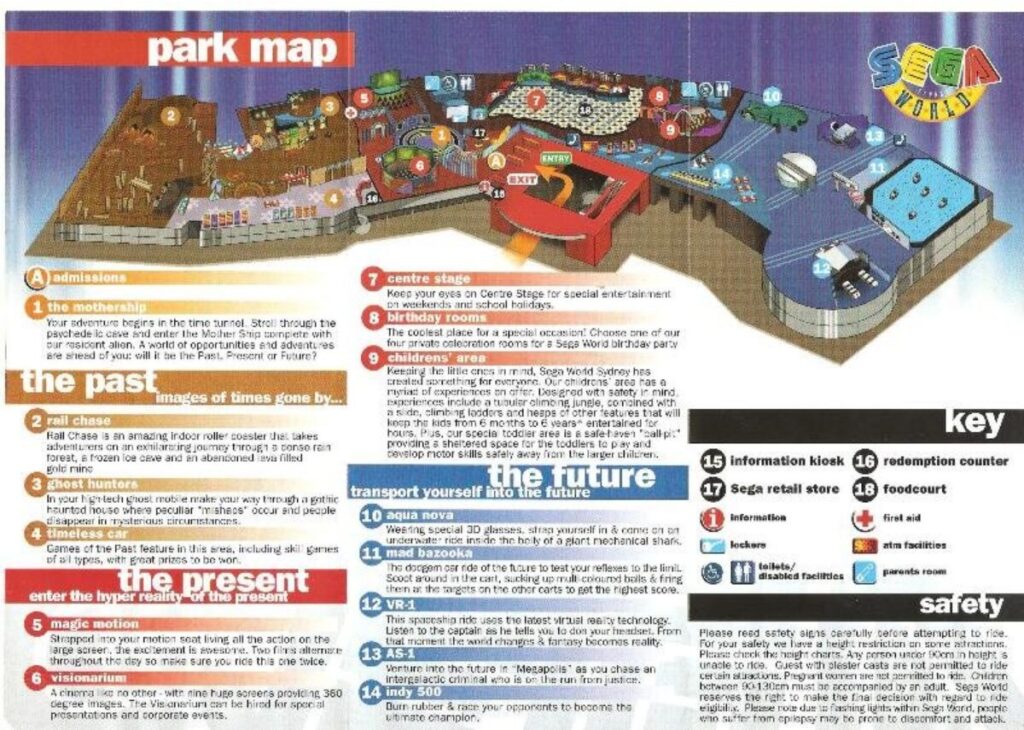
Its hours were 10am to 10pm, Sunday to Thursday, and midnight on Friday and Saturday.
Admission and 36 tokens are $36 ($74 today) for an adult, and $24 ($50 today) for children. Most attractions cost between four to six tokens. Entry without tokens costs $5 ($10 today) during its first year.
It would cost $120 for a family of 4, or $250 today.
During March 1997, Sega also announced it was looking at building a second Sega World in the Docklands in Melbourne. The Theme Park opens before the retail and restaurant complex underneath, which gradually unfolds over the coming months.
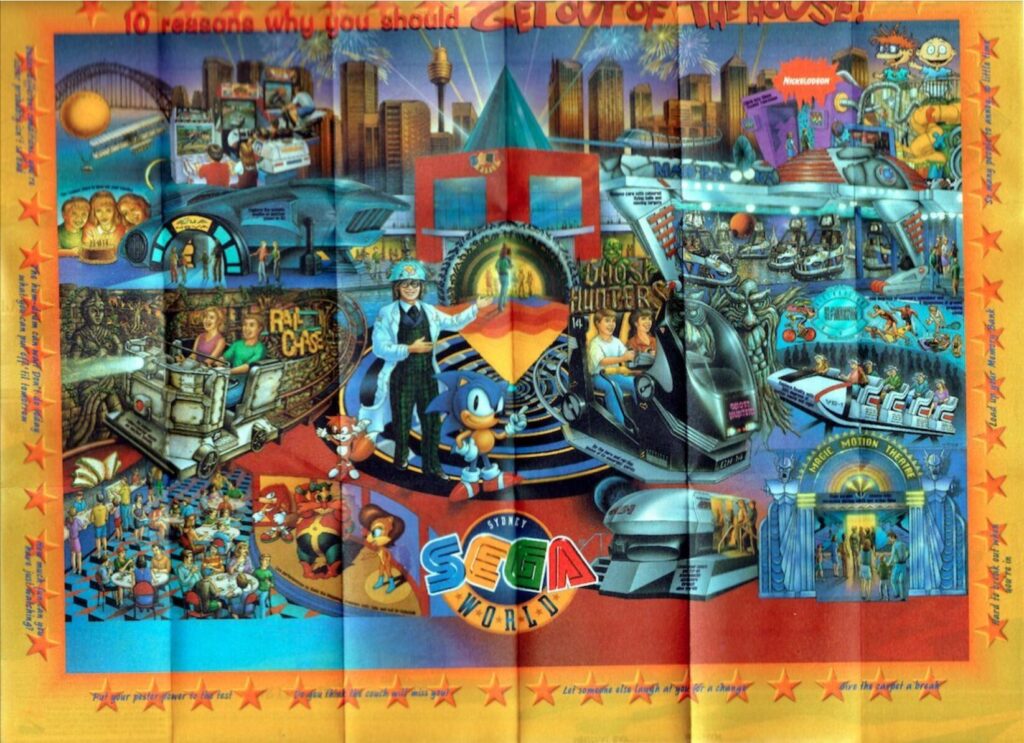
During its first year of operation, as part of the park’s entertainment, there were live shows (done at the Centre Stage), including a major one called Sonic Live in Sydney, similar in a way to how Disney does live shows.
During the show, Doctor Robotnik escapes from the planet Mobius to Australia and attempts a hostile takeover of Sydney, which is foiled by Sonic, Tails, and Princess Sally .Due to a lack of interest, the live show was canceled in 1998. It was replaced with a puppet show from 1998.
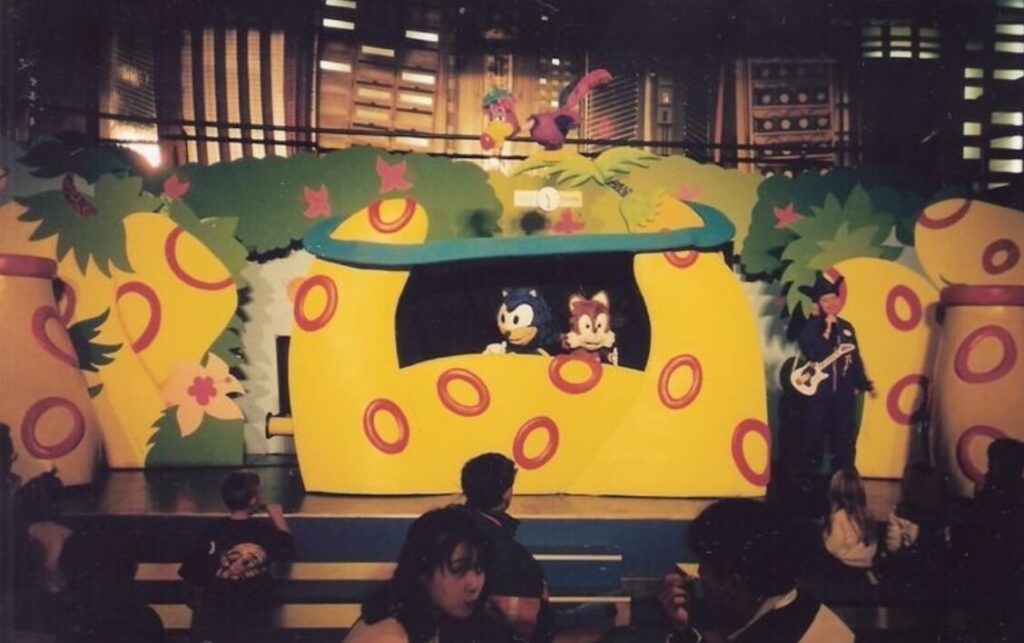
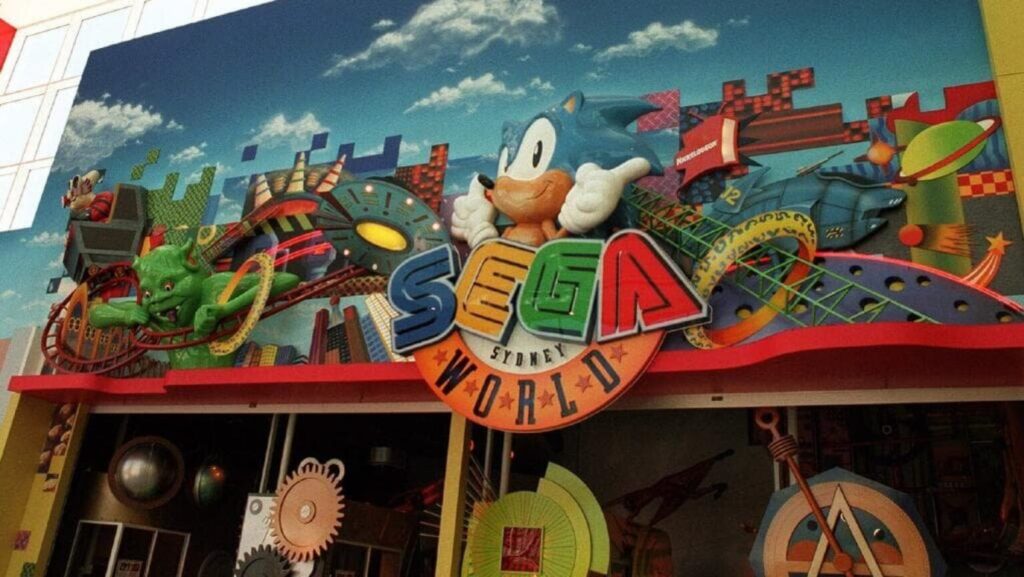
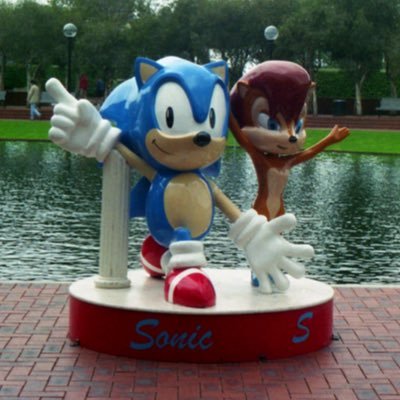
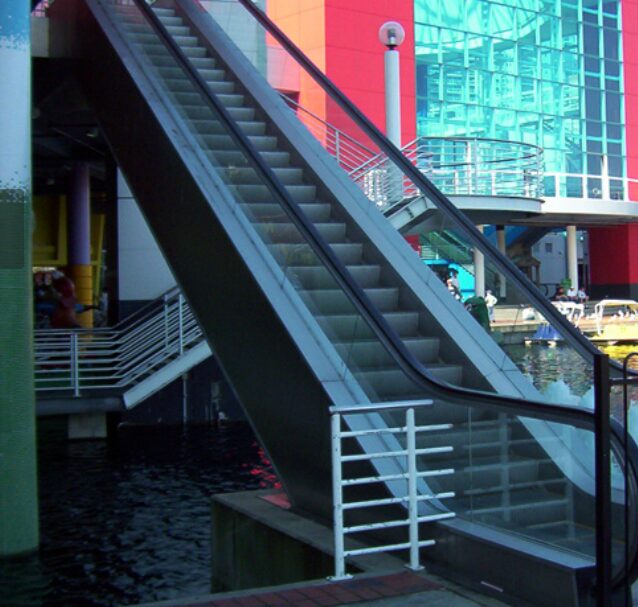
The major attraction at the park was Rail Chase The Ride. It was an indoor mine train rollercoaster.
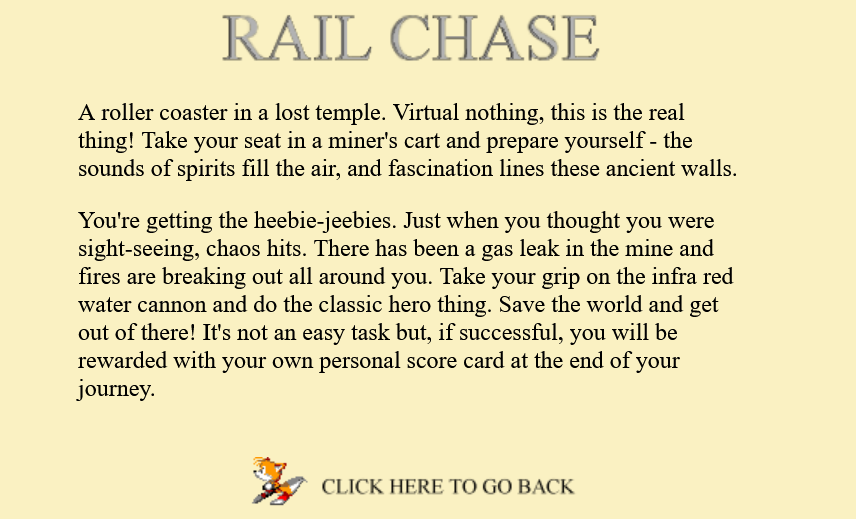

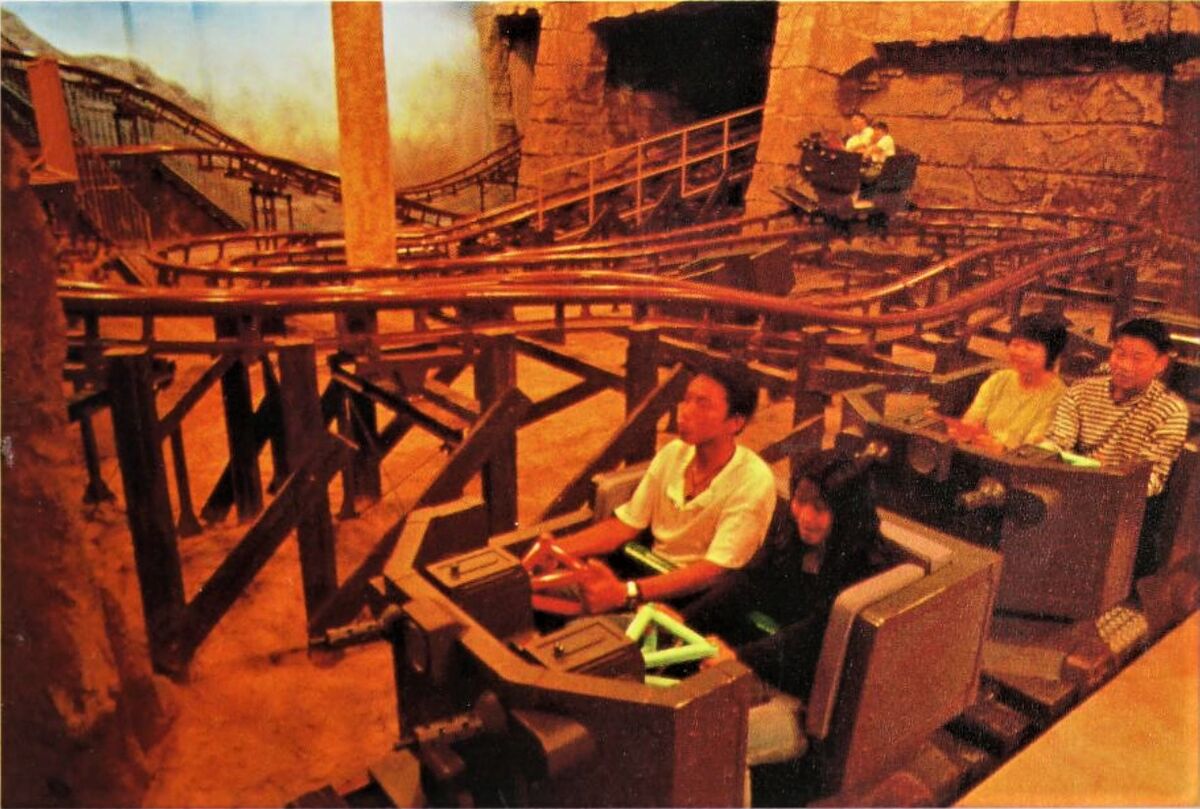
Ghost Hunters was another attraction. It was a Ghost Train that included guns to shoots ghosts, described by Sega as ‘ghostbusting.
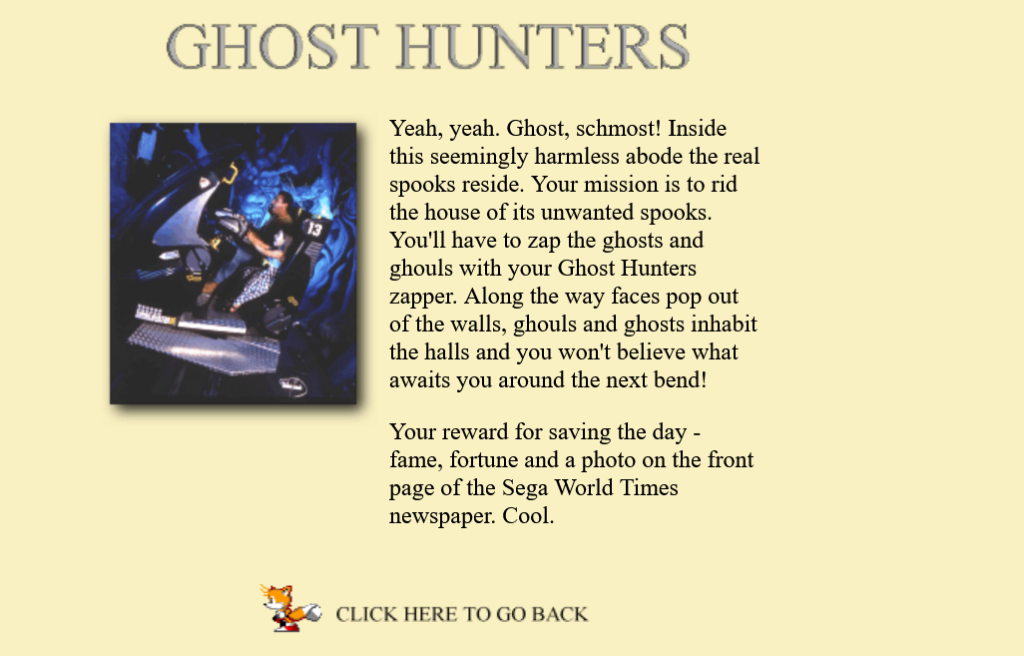

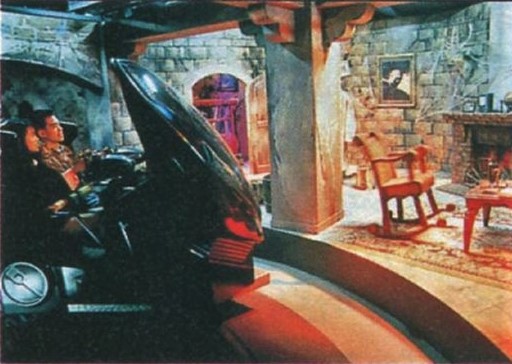
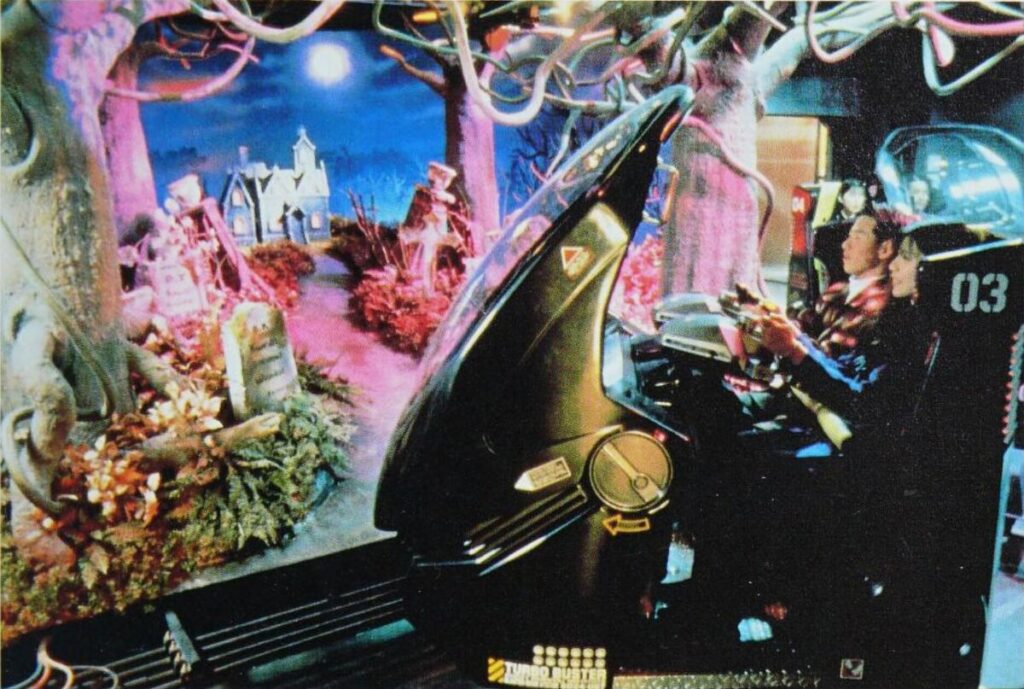
Aqua Nova was a 3D motion underwater simulator
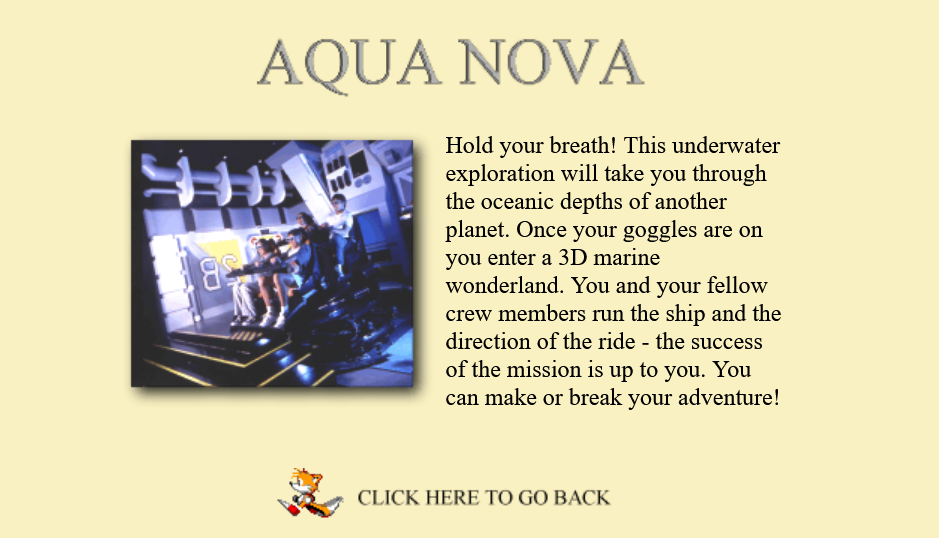
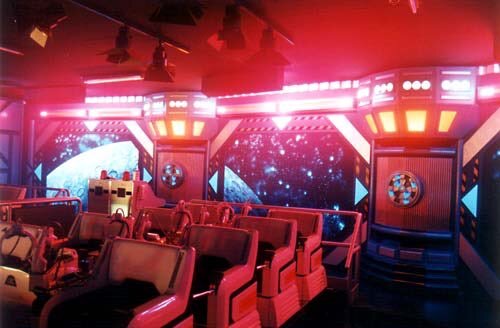
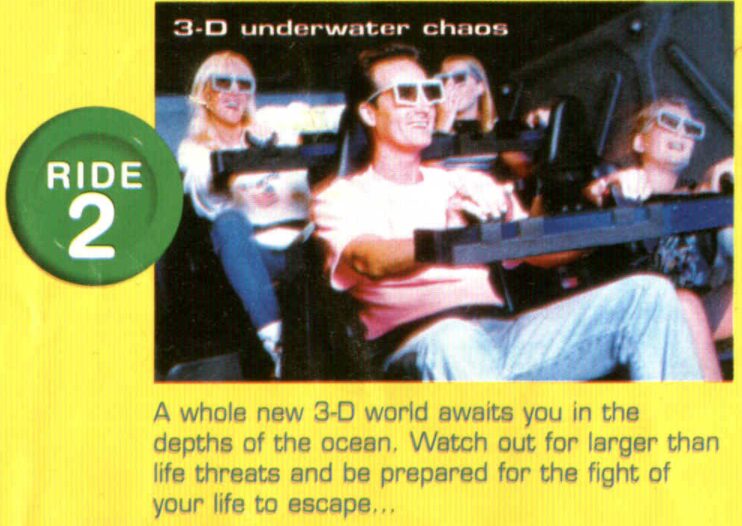
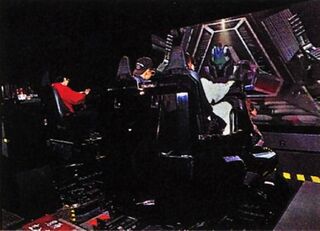
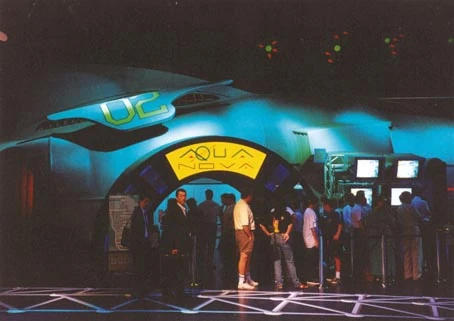
Magic Motion Cinema. This was a “4D” cinema. It was a 3D theatre with moving seats.
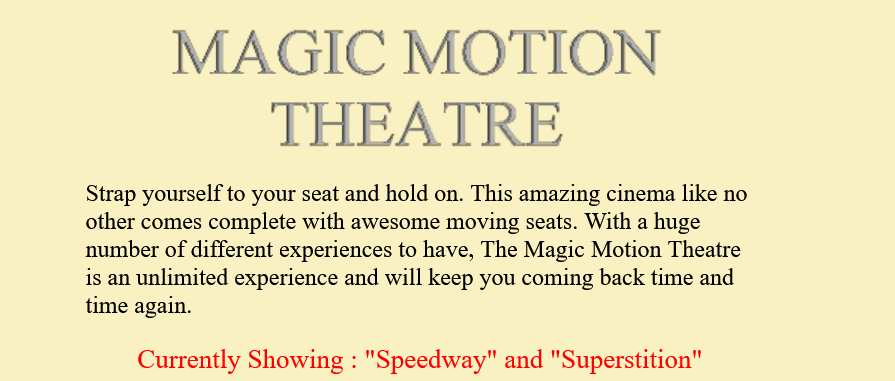
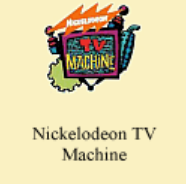
Nickelodeon TV Machine was a kids play area with theme of Nickelodeon kid tv shows. It included a green slime, a climbing jungle, ball pits and a spiral slide.
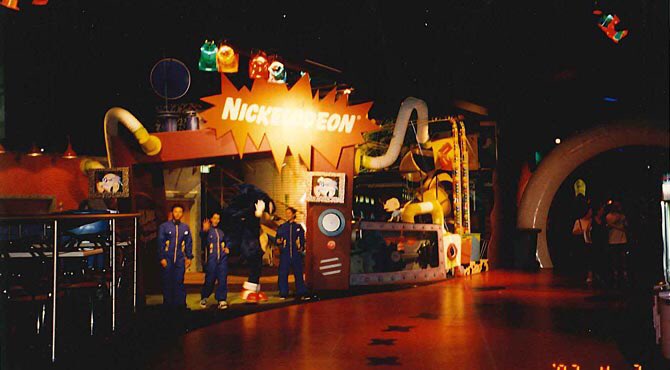
Visionarium, Another 4D motion theatre, with 360 degrees of view.

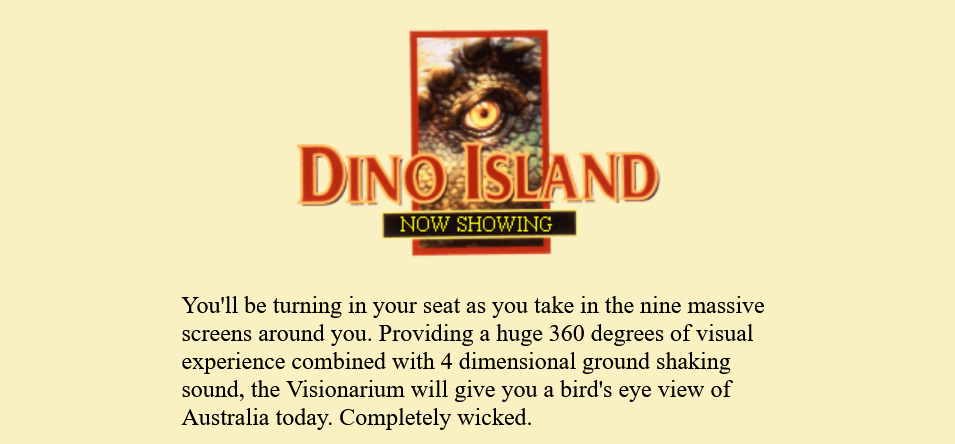
Mad Bazooka was a tank simulator bumper car ride, that had ball cannons. Balls were collected from the floor of the arena by running over them, and then could be fired at targets mounted to the roofs of other cars.
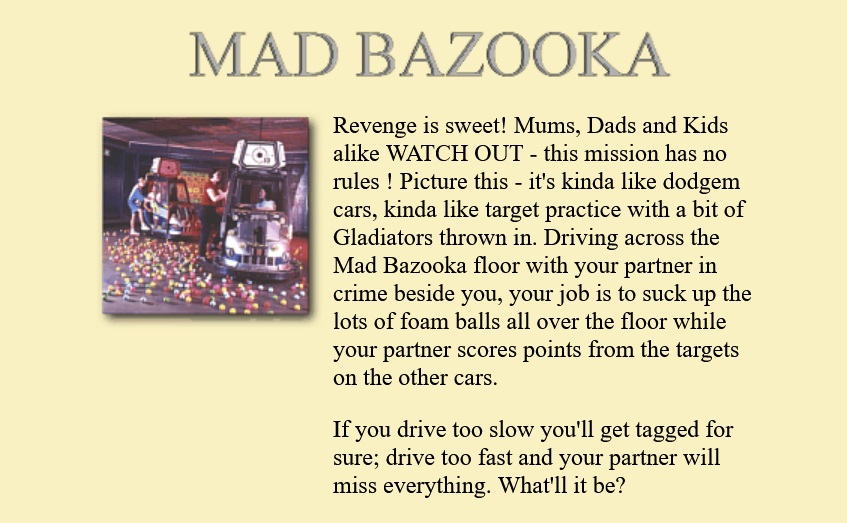
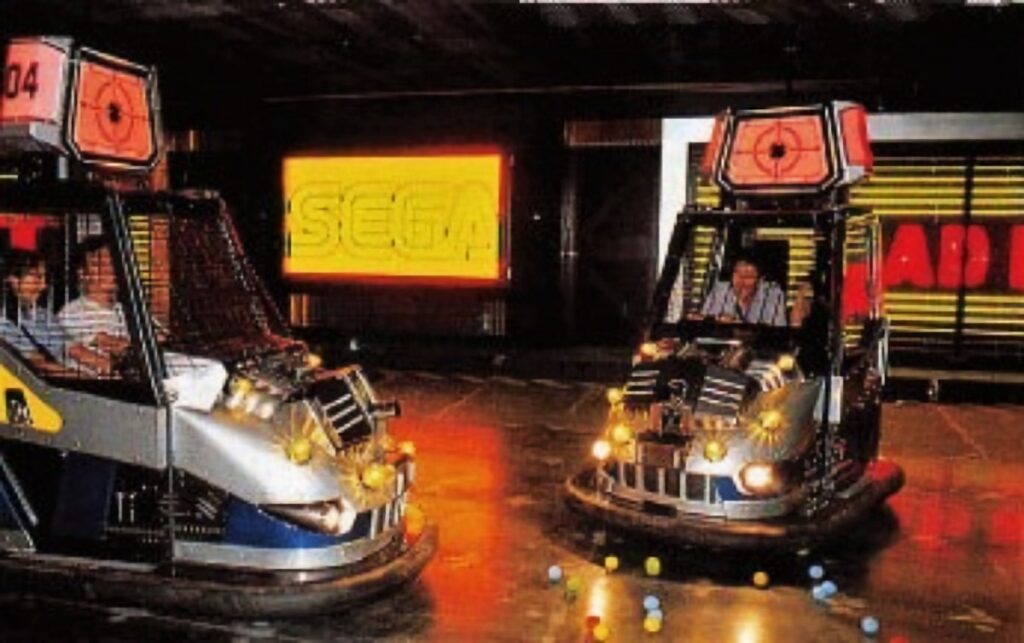

VR – 1. VR-1 was a Virtual Reality ride with headsets combined with motion.
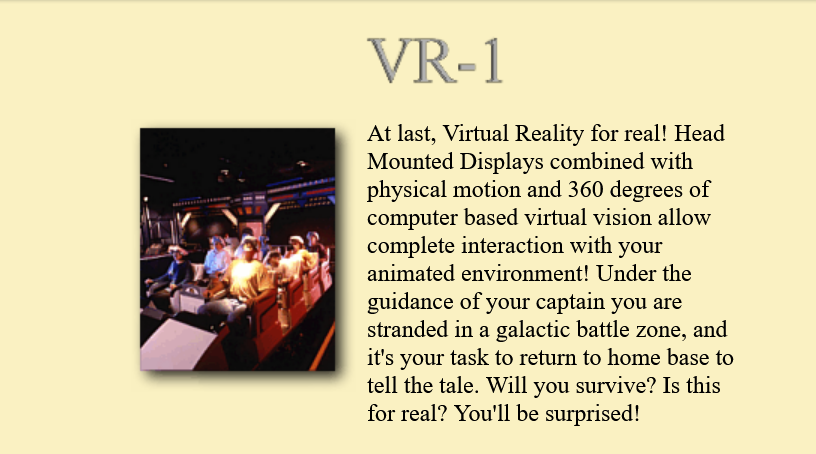
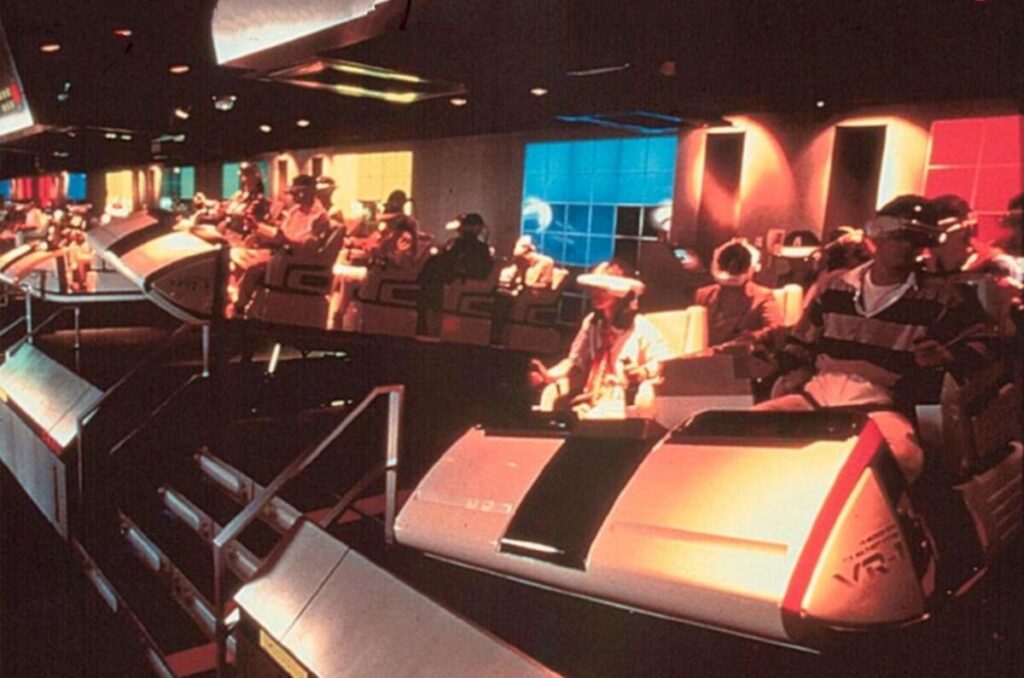
AS-1. The AS-! was a motion simulation that starred Michael Jackson. It simulated a futuristic chase of a criminal during a training mission gone wrong.
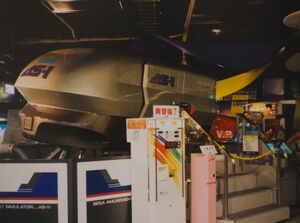
G-LOC: Air Battle another motion simulator based on the Arcade video game series of the same name.
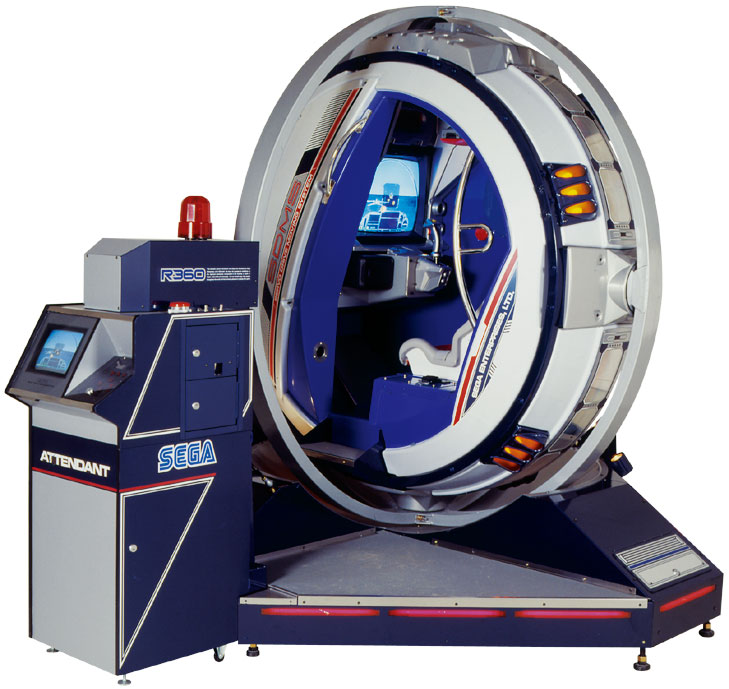
Sega struggles for it’s first two years, and does not break even. In 1999, Sega sells it’s entire stake in the park to Jacfun, for $36 million.
Sadly for Aussie kids, Sega World closed November 2000, due to constant financial losses and below expected attendances. Even the Sydney Olympics didn’t help it break even sadly.
By March 2001, all contents of the park are auctioned off. The two major rides are sold off to foreign buyers, the Rail Chase and Ghost Hunters.
Shorly after the closure of the park, the other major tennats of the Darling Walk close, the Daintree Cafe and One Worlds Sports Resturant.
Owner Jacfun planned on building a new entertainment zone, however they fail to find major new tennents that want to move in.
By 2006, only McDonalds is left in the complex; however the complex is used as a furniture exhibition warehouse.
2008, the SHFA leased the Darling Walk site to Lendlease for $560 million, who planned to demolish the building and erect two nine-storey office blocks for the Commonwealth Bank.
In March 2009, the remains of Sega World are sadly demolished.
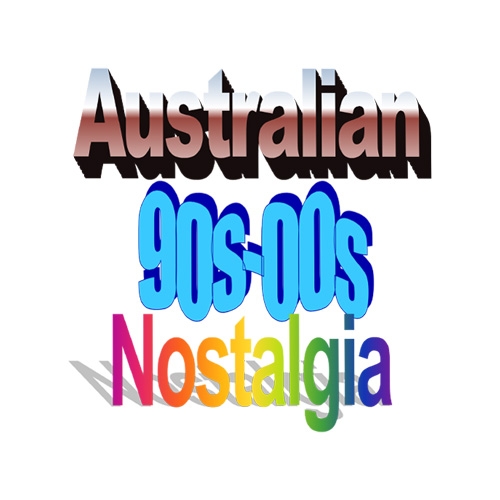
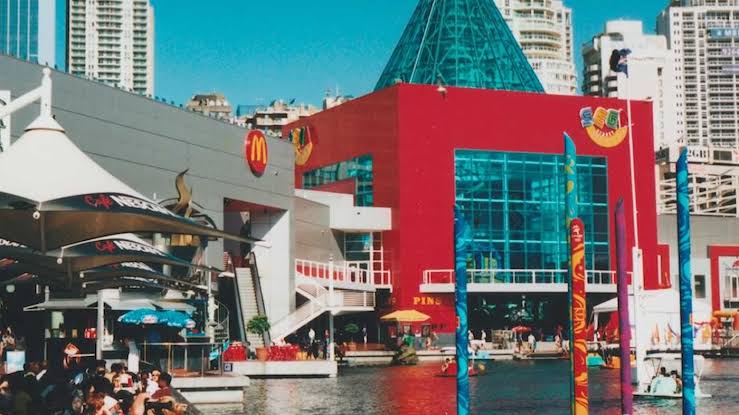
Leave a Reply